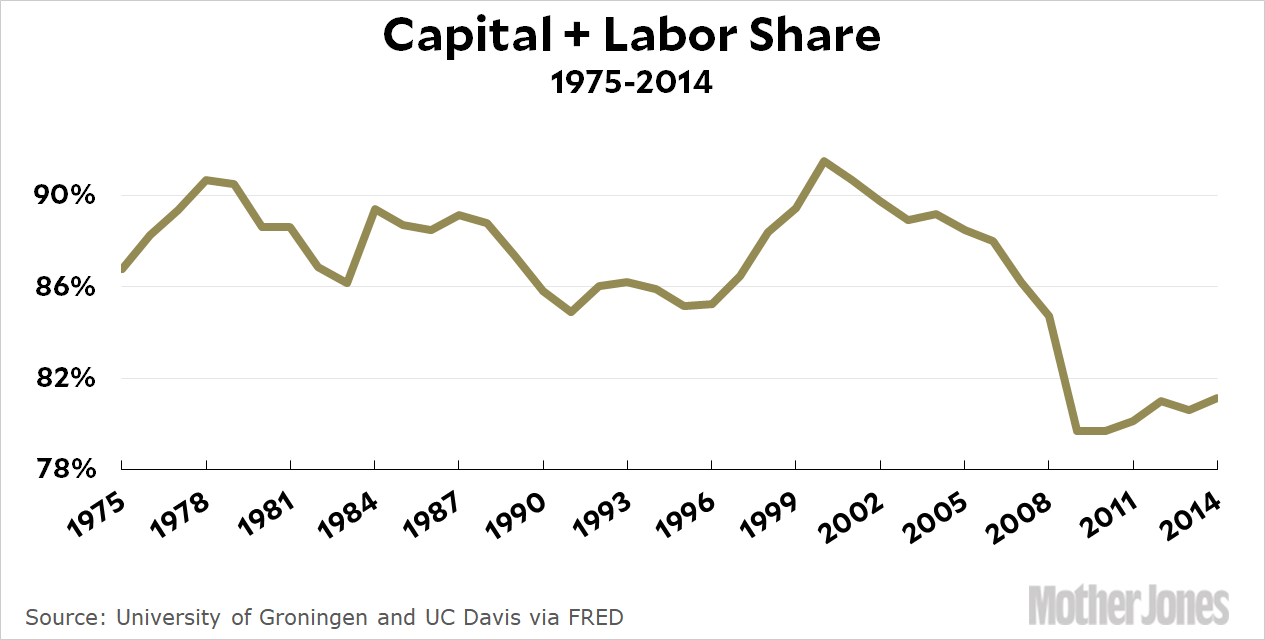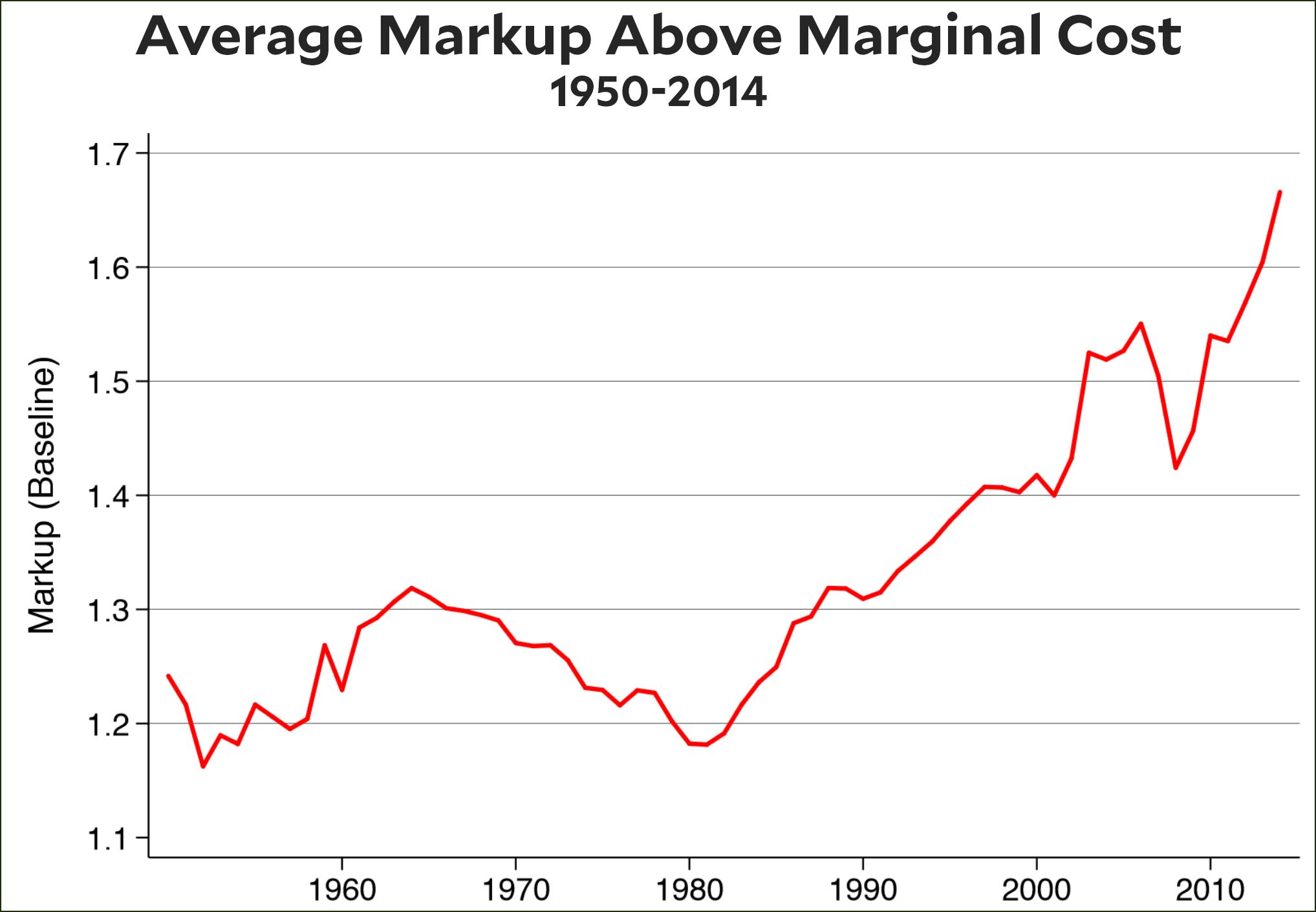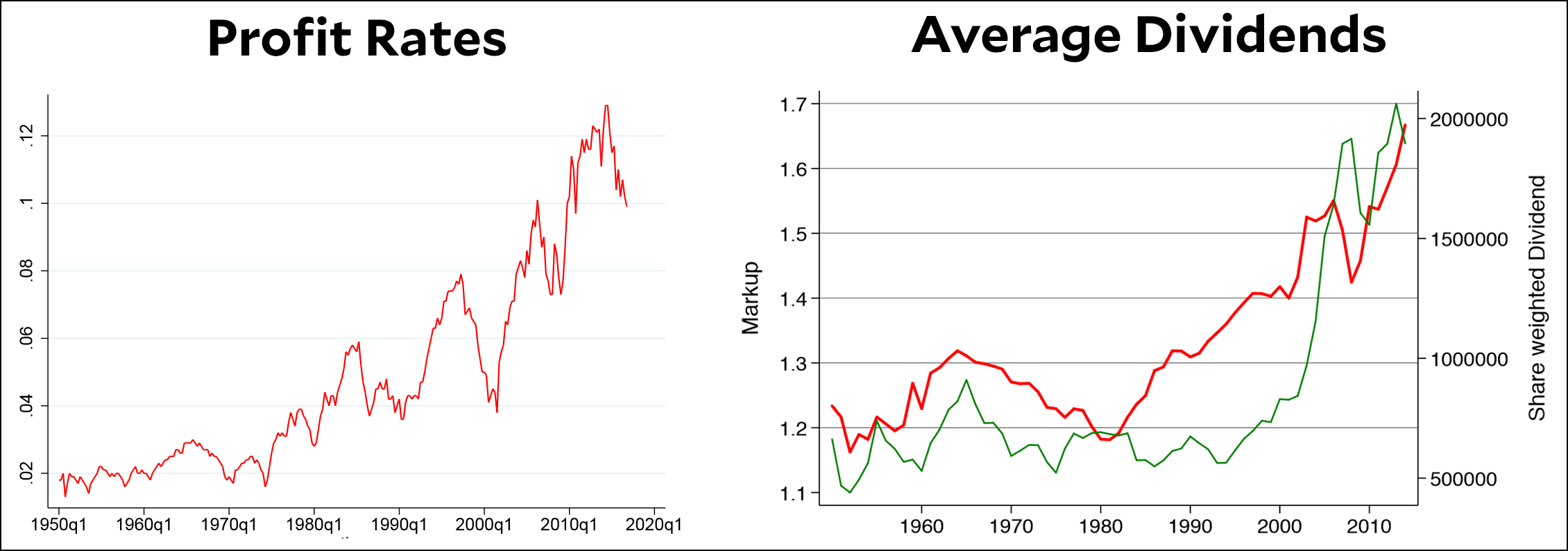This is a fairly long and abstruse post about the increasing market power of corporations, so I want to get it in before it’s Trump O’Clock and our president declares war on penguins or something. So here we go.
In economics, the “labor share” is the percentage of total national income that goes to compensate employees. It’s been declining in fits and starts since the mid-70s, falling from about 65 percent to 60 percent of total income.
So this means the capital share of total income is going up, right? Oddly enough, no. As with the labor share, it’s gone up and down in fits and starts, but since the mid-70s it’s declined from about 27 percent to 21 percent.
Here’s what the sum of labor and capital shares looks like since 1975:

The fits and starts mostly cancel out, with total capital + labor shares humming along at roughly 87 percent, with a bit of a spike upward during the dotcom boom of the late 90s. But then they both tumble, with the aggregate of both shares falling from about 91 percent to 80 percent. This means that something else has gone up from 9 percent to 20 percent since 2000. What?
The profit share. Companies have become immensely more profitable over the past two decades. But how has this happened? In a new paper, a pair of researchers painstakingly reconstruct the size of corporate markups, and they conclude that the average firm now charges 67 percent over its marginal cost compared to 18 percent in 1980:

You will be unsurprised to learn that higher markups lead to higher profits and hence higher dividend payouts to shareholders:

The rise in profits implies an increase in market power, and the authors suggest that increased market power plus increased markups can explain a lot of recent economic trends:
- The decline of low-skill wages. “Nominal wages…are lower for higher market power…But real wages are even lower….Even under perfectly elastic labor supply where nominal wages are constant, real wages are decreasing in market power.”
- The decline in labor force participation. “[The rising number of women in the labor force] leveled off in the mid 1990s, which is consistent with the fact that we start to see the impact of a decrease in the total labor force participation due to the rise in market power.”
- The decline in labor flows (people switching jobs, or moving from unemployment to employment). The authors note that firms have become less responsive to productivity shocks in recent decades: “If the distribution of idiosyncratic shocks remains unchanged, then the responsiveness of the labor input and therefore the transmission of shocks will lead to a decrease in job flows as market power increases.”
-
The decline in people moving to different regions to find jobs. “If firms are based in different local labor markets and a fixed fraction of all job relocation
decisions are between local labor markets, then lower job flow rates will automatically give rise to lower migration rates.” - The slowdown in GDP growth. The authors say this is an artifact of a mismeasurement of productivity growth: “We find that except for a dip around the great recession, productivity actually increases and hovers around 3 to 4% after the 2000….This indicates that properly accounting for market power, there is no productivity slowdown but instead an increase in productivity.”
- Higher inflation than we’d otherwise have. “This is surprising given the low inflation rates in the last decades—and particularly low ones since the great recession. Of course, monetary policy is not the appropriate policy tool to remedy that source of inflation. That would be the prerogative of anti-trust policy.”
- An overvalued stock market. “In the presence of market power, the stock market is therefore not a good gauge of an economy’s output.”
Why have firms gained so much more market power? The authors offer several possibilities: “The rise of merger & acquisition activity, deregulation, the higher share of network goods, the increase in wholesale transaction, private equity, improved product differentiation, increased vertical and financial integration of competitors. A common factor in each of these is technology. Rapid technological change allows firms to better create and preserve situations of market power.”
This post has been long and intricate, and I can’t even offer an independent judgment of whether this paper has merit. It’s just too complicated for me. But if the authors are right, it’s yet another reason to be disturbed by the collapse of antitrust and the growth of megafirms over the past few decades. Always remember: Competition is good. Competition is good. Competititon is good.
















